Oceania is a region that includes numerous islands scattered across the Pacific Ocean. This region is home to a fascinating array of bird species, many of which are endemic to the area.
With its tropical climates and diverse habitats, Oceania provides an ideal environment for birds to thrive. From the vibrant and colorful parrots to the majestic birds of prey, the birdlife in Oceania captivates bird enthusiasts from all over the world.
In this article, we will explore the various species of birds found in Oceania, highlighting some of the most unique and fascinating examples of avian life in the region.
1. Emu
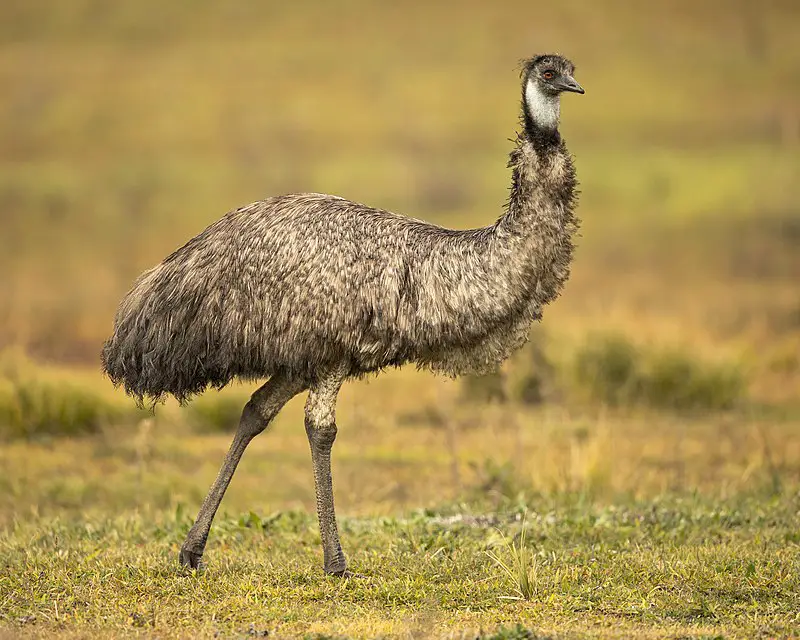
The Emu is a large bird native to Australia, and the only living species of its genus. It stands as the second-tallest living bird in the world after ostriches.
These birds are largely flightless but can run fast over short distances with their long legs, allowing them to escape from predators easily.
They have brown feathers that help camouflage them on open grasslands and wooded areas they inhabit throughout mainland Australia.
Unfortunately, three subspecies of emus on Kangaroo Island, King Island, and Tasmania became extinct soon after European settlers arrived in Australia due to hunting or habitat destruction caused by human activities such as logging or agriculture development.
Despite this decline in population numbers, these impressive creatures continue to thrive across much of continental Australia today.
Scientific classification:
| Kingdom | Animalia |
| Phylum | Chordata |
| Class | Aves |
| Infraclass | Palaeognathae |
| Order | Casuariiformes |
| Family | Casuariidae |
| Genus | Dromaius |
| Species | D. novaehollandiae |
Also Featured In: Most common birds in Australia, Birds You’ll Find in Zoo
2. Laughing Kookaburra
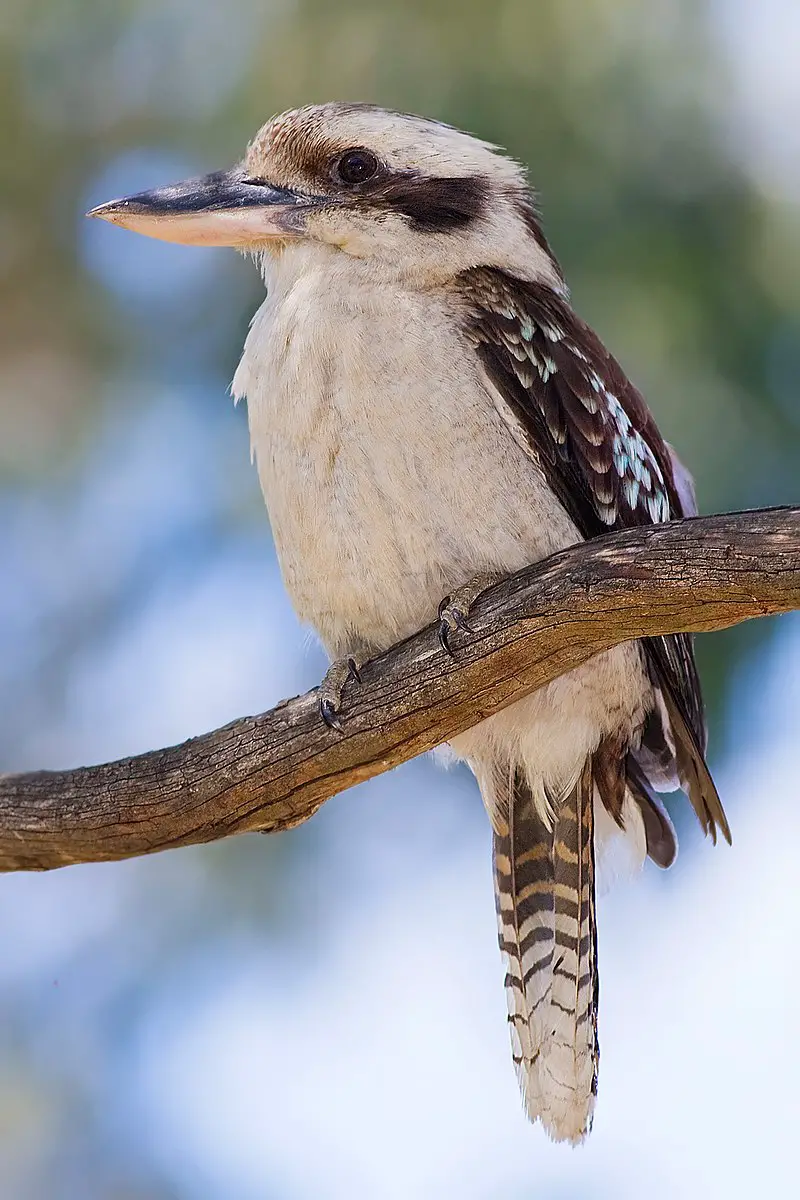
The Laughing Kookaburra is a beautiful bird with distinct features. It has a whitish head and brown eye stripe, along with an upper body that is predominantly dark brown.
On its wings are mottled light blue patches which make it stand out even more. Its underparts are cream white while its tail is barred in rufous and black colors.
Male and female birds have the same plumage, making them easy to identify as belonging to this species of kingfisher subfamily Halcyoninae.
They can be found living around woodlands or open forests throughout eastern Australia, where they feed on small reptiles, insects, or amphibians by swooping down from a perch above them before carrying their prey back up again for consumption.
The sound of their loud distinctive call – “koo-kaa-brrr” – brings joy to many Australians who appreciate these wonderful creatures inhabiting our land.
Scientific classification:
| Kingdom | Animalia |
| Phylum | Chordata |
| Class | Aves |
| Order | Coraciiformes |
| Family | Alcedinidae |
| Subfamily | Halcyoninae |
| Genus | Dacelo |
| Species | D. novaeguineae |
Also Featured In: Birds that Live around Brisbane, Birds that Live around Victoria
3. Kookaburra
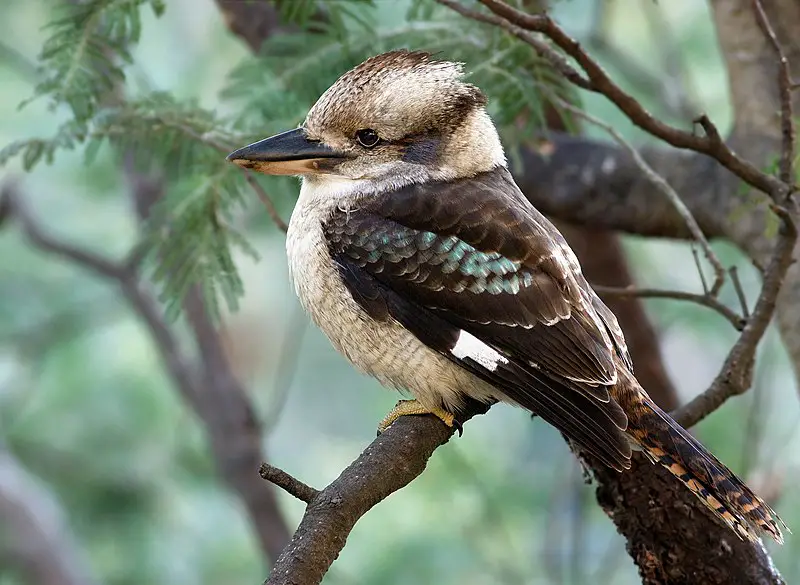
Kookaburras are the kingfishers of Australia and New Guinea. They measure between 28-47 cm in length, weighing around 300g. These birds have a distinctive call that sounds like loud laughter – this is why they’re called ‘Laughing Kookaburra’.
It’s become a popular sound effect for many situations involving Australia. Their vocalizations can be heard from up to 2km away and consist of both single notes or repetitive series.
They eat small insects, lizards, frogs, snakes, and other small animals as well as sometimes fruits too.
In captivity, their lifespans can reach over 20 years old but usually not more than 10 in the wild due to predators such as cats and foxes preying on them.
Scientific classification:
| Kingdom | Animalia |
| Phylum | Chordata |
| Class | Aves |
| Order | Coraciiformes |
| Family | Alcedinidae |
| Subfamily | Halcyoninae |
| Genus | Dacelo Leach, 1815 |
4. Southern Cassowary
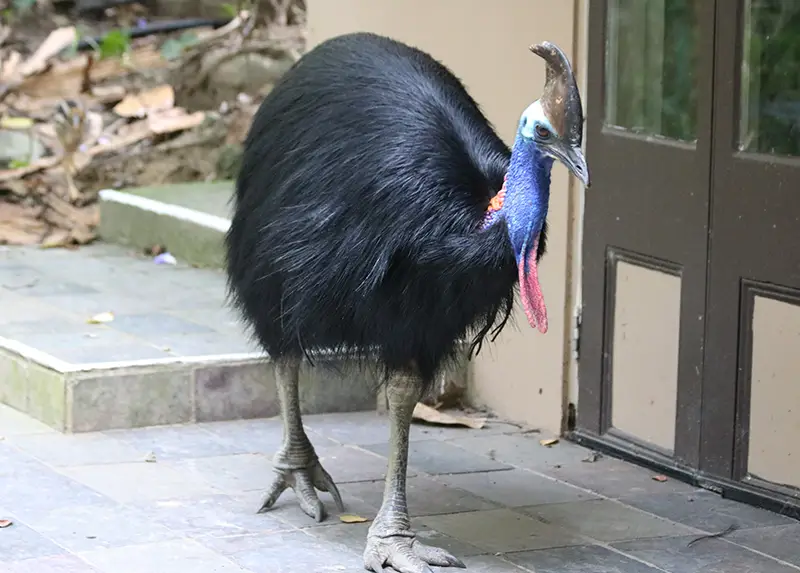
The southern cassowary is a large flightless black bird that can be found in Australia and New Guinea. It belongs to the ratite family, which consists of birds such as emus, ostriches, rheas, and kiwis.
The southern cassowary has two wattles (fleshy protrusions) on its neck; this makes it stand out from other species of cassowaries since they usually only have one wattle.
This bird stands at an impressive height of up to 1.5m tall and weighs around 60kg.
They are omnivorous animals but favor fruits over anything else, although they also eat insects, small vertebrates like lizards or snakes, and fungi too.
Southern Cassowaries play an important role in maintaining healthy ecosystems by dispersing seeds through their droppings – thus helping forests regenerate naturally.
Scientific classification:
| Kingdom | Animalia |
| Phylum | Chordata |
| Class | Aves |
| Infraclass | Palaeognathae |
| Order | Casuariiformes |
| Family | Casuariidae |
| Genus | Casuarius |
| Species | C. casuarius |
Also Featured In: Birds Typically Found in Australian Rainforest, Birds of Far North Queensland
5. Crested Pigeon
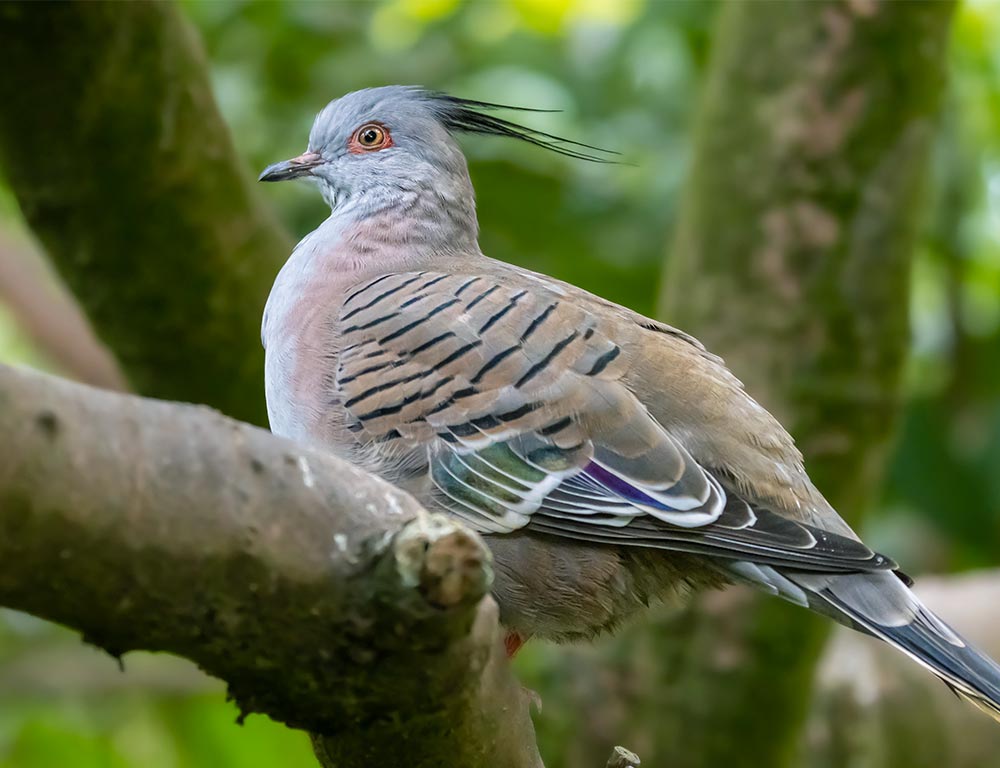
The Crested Pigeon is a medium-sized bird found widely across mainland Australia. It stands out from other pigeons due to its unique erect crest on the top of its head, which gives it an unmistakable look.
The body of this pigeon is slate grey with lighter gray undersides and chestnut-colored wings that have white tips when they are open while flying.
Its striking black-tipped yellow beak and pale blue eye ring add further interest to this beautiful species.
When alarmed, these birds will make loud clapping sounds by bringing their wings together above their backs as part of their defensive behavior.
Scientific classification:
| Kingdom | Animalia |
| Phylum | Chordata |
| Class | Aves |
| Order | Columbiformes |
| Family | Columbidae |
| Genus | Ocyphaps G.R. Gray, 1842 |
| Species | O. lophotes |
Also Featured In: Birds that Live Near Adelaide, Queensland Birds You Should Know
6. Wedge-Tailed Eagle
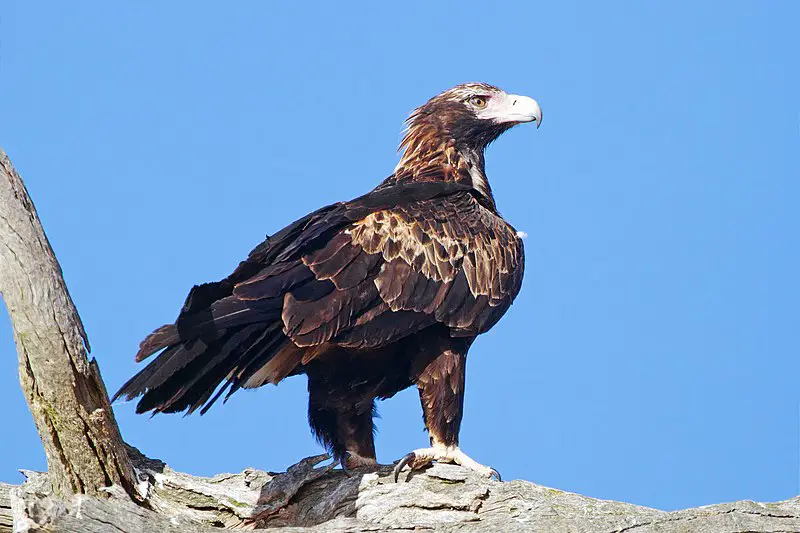
The majestic Wedge-tailed Eagle is a sight to behold in the skies above Australia, New Guinea, and Tasmania.
With its long broad wings, fully feathered legs, distinctive wedge-shaped tail, and powerful beak and feet it stands out from other birds of prey with ease.
This large raptor has an impressive wingspan ranging between 1.8m – 2.3m for males while females are slightly larger at up to 2.6m wide.
Its diet mainly consists of carrion but they have also been known to hunt for rabbits or small mammals such as rock wallabies when food is scarce due to their sharp talons that can easily tear apart their prey’s flesh with one swift movement.
Despite being listed as near threatened these beautiful creatures still remain fairly common throughout its range making them a true delight to see soaring through our Aussie skies.
Scientific classification:
| Kingdom | Animalia |
| Phylum | Chordata |
| Class | Aves |
| Order | Accipitriformes |
| Family | Accipitridae |
| Genus | Aquila |
| Species | A. audax |
Also Featured In: South Australian Birds, Birds of Tasmania
7. Kākāpō
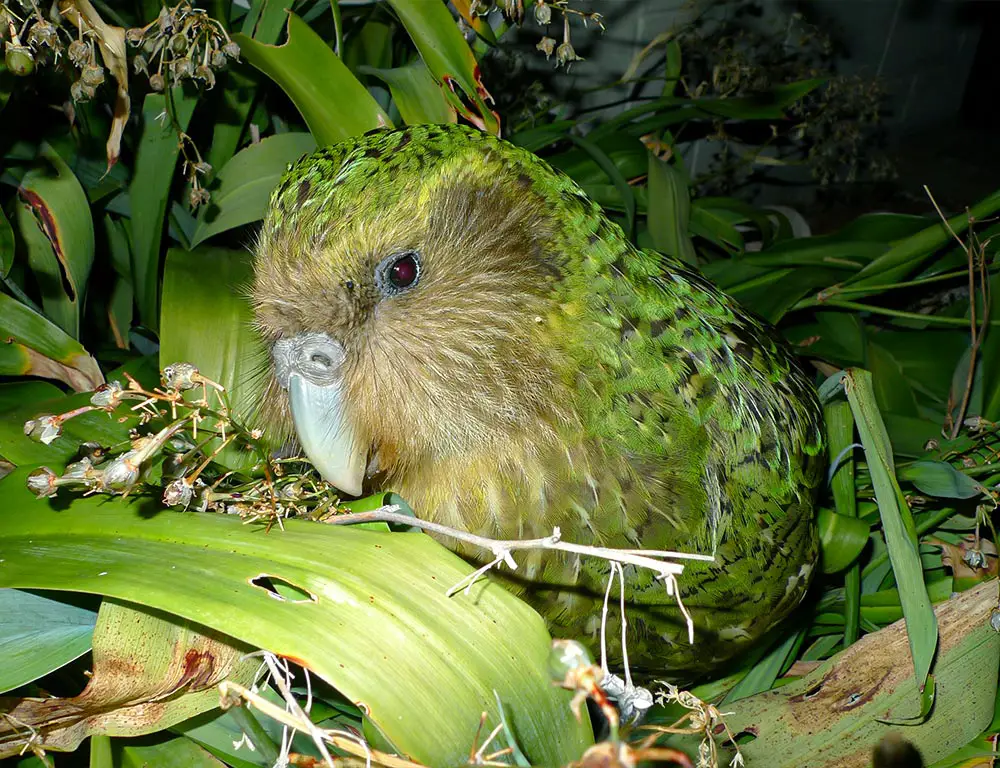
Kākāpō are unique and endangered birds native to New Zealand. They grow up to 25 inches in length, with finely blotched yellow-green plumage and a distinct facial disc made of feathers.
These flightless parrots have nocturnal habits, spending the nighttime on the ground foraging for food like berries or insects.
Kākāpōs were once widespread across both main islands but their population has been dramatically reduced due to deforestation, predation by introduced species such as cats and rats, and competition from other bird species.
Today there are only about 200 kakapo left in existence making it one of the world’s rarest birds – conservation efforts must be increased if we want these amazing animals around for future generations.
Scientific classification:
| Kingdom | Animalia |
| Phylum | Chordata |
| Class | Aves |
| Order | Psittaciformes |
| Superfamily | Strigopoidea |
| Family | Strigopidae Bonaparte, 1849 |
| Genus | Strigops G.R. Gray, 1845 |
| Species | S. habroptilus |
Also Featured In: New Zealand Birds, Birds You’ll Find in Night
8. Kea
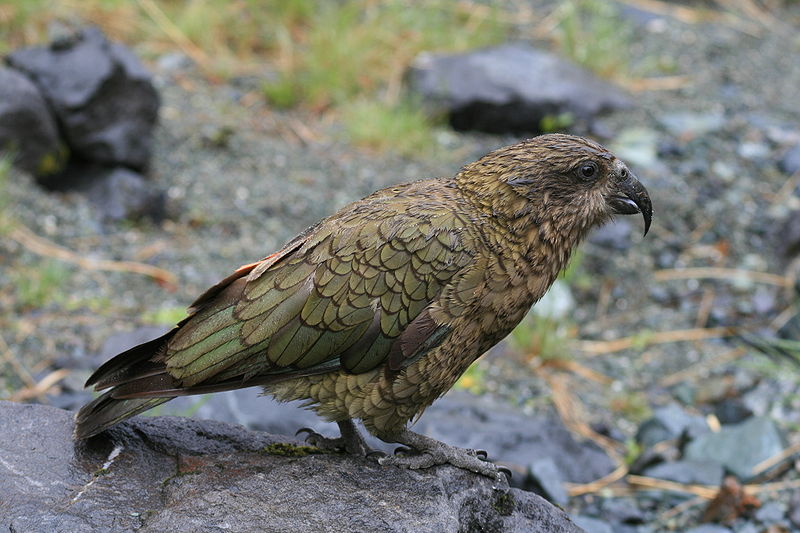
The Kea is an impressive species of large parrot found in the South Island of New Zealand. It stands at 48 cm and has a beautiful olive-green color with orange under its wings, as well as a long curved grey-brown upper beak.
Its diet consists mainly of root vegetables but also includes carrion on occasion.
The Kea is known for being one of the world’s few alpine parrots, living in forests only below 1,200m above sea level due to its tolerance towards cold weather conditions.
It’s incredibly intelligent too; they have been observed solving puzzles and using tools. This remarkable bird makes a great addition to any nature enthusiast’s list when visiting this region.
Scientific classification:
| Kingdom | Animalia |
| Phylum | Chordata |
| Class | Aves |
| Order | Psittaciformes |
| Family | Strigopidae |
| Genus | Nestor |
| Species | N. notabilis |
Also Featured In: Endangered Birds of New Zealand,
9. Little Penguin
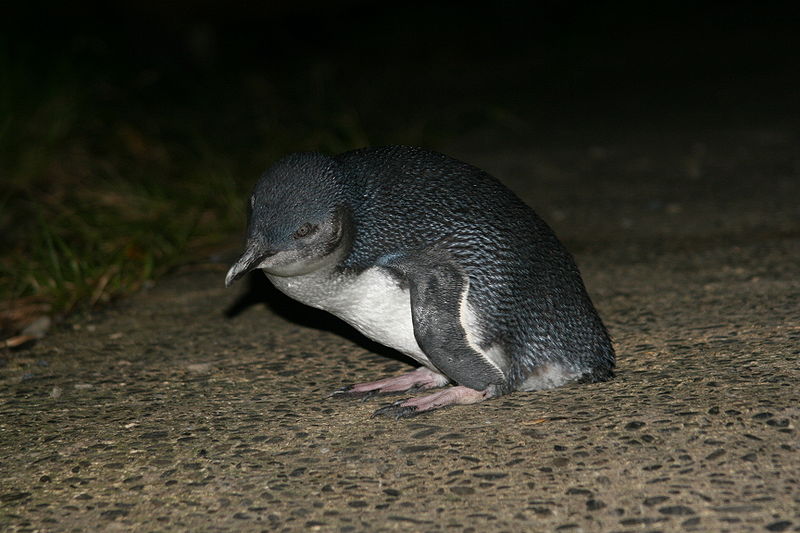
The Little Penguin, also known as the Blue Penguin or Kororā in Māori, is a type of penguin found in New Zealand. With its distinctive slate-blue plumage, it is a beloved symbol of the island nation’s wildlife.
The Little Penguin is a small bird that stands no taller than 40cm and weighs a mere 1kg, making it the smallest species of penguin in the world.
It can be found in many coastal and offshore areas around New Zealand and is also known to frequent parts of Australia.
There is such a strong connection between New Zealand and this dapper little bird that it is often used as the mascot for local sports teams and other cultural events.
Despite its diminutive size, the Little Penguin is a tough survivor who has adapted well to the challenges of life in the wild.
Scientific classification:
| Kingdom | Animalia |
| Phylum | Chordata |
| Class | Aves |
| Order | Sphenisciformes |
| Family | Spheniscidae |
| Genus | Eudyptula |
| Species | E. minor |
Also Featured In: Common Melbourne Birds, Birds that Live in Kangaroo Island